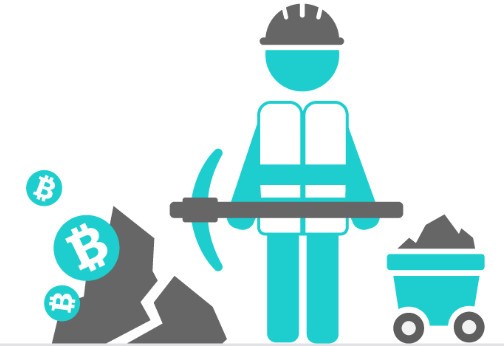
Proof of work, commonly abbreviated as PoW is the oldest method of consensus. A consensus algorithm is, in general, a decision-making process within a group.
A PoW algorithm works in such a way that nodes within a network proves to others (the verifiers) that a certain amount of a specific computational effort has been expended. Verifiers can subsequently confirm this expenditure with minimal effort on their part.
The goal of PoW algorithms is not to prove that specific work was done or that a computational issue was “solved”, but to discourage data modification by imposing high energy and hardware-control requirements.
Origin
Cynthia Dwork and Moni Naor introduced the notion in 1993 as a technique to combat denial-of-service (DOS) attacks and other service abuses such as spam on a network by requiring some work from a service requester, often processing time by a computer.
Markus Jakobsson and Ari Juels invented and standardized the term “proof of work” in a 1999 publication. PoW was later popularized by Bitcoin as the basis for consensus in a permissionless decentralized network in which miners compete to add blocks and mint new money, with each miner having a success probability proportionate to the computing effort exerted.
Why is PoW necessary?
The problem with a blockchain, such as Bitcoin, is to keep an agreed-upon transaction record in the absence of a central authority. So, the main challenge is how a group of peers with comparable status can agree on who should be permitted to contribute to the shared record. PoW is how miners (block publishers) demonstrate to the rest of the world that they have put in the effort required to construct a well-formed block of transactions to add to the blockchain.
PoW is significant because it provides evidence of confidence in a trustless environment.
This protocol ensures that excessive mining does not occur. This is accomplished by increasing the complexity of confirming each block.
It preserves the cryptocurrency’s supply while also assisting miners in keeping the network operational. At the same time, it makes use of limited resources such as time, processing power, and energy.
How does the PoW work?
The working of PoW protocol can be summarized in brief as follows
- The transactions are bundled together into units generally known as blocks.
- The transactions within each block are verified for legitimacy by the miners.
- A mathematical puzzle known as the proof-of-work problem has to be solved by the miners to account for verification.
- The first miner who solves each block problem is being rewarded.
- Then the verified transactions are stored in the public blockchain.
Benefits
There are several advantages to using PoW systems. They are an excellent method of discouraging spammers. If a fair amount of effort is required for each procedure, such as sending an email, most spammers will not have the processing power to send a significant number of unwanted emails.
Furthermore, PoW frameworks may be utilized to safeguard a whole network. This is the key benefit of blockchains that use a consensus approach for PoW. If enough nodes compete to discover a certain solution, the processing power necessary to overwhelm and dominate a network becomes unattainable for any one bad actor or even a single group of bad actors.
Limitations
- Huge expenditures: There is a need for specialized computer hardware to run complicated algorithms for mining. The cost is also high and not affordable. In addition, the special mining pools need a massive amount of power to run, which further alleviates the cost.
- The uselessness of computations: There is a lot of power required for the machines to generate a block by the miners. however, their estimates are not valid anywhere else, such as a company, science, or others.
- 51% attack: A 51% attack is a PoW attack by the majority of the group of users, who controls the majority of the mining power. The attackers come in complete power, where they can monopolize by creating blocks and receive rewards.
Conclusion
The initial answer to the problem of double-spending was PoW, which has shown to be accurate and successful.
In the PoW, all miners are expected to compute a difficult sum. The winner is also selected by the individual who possesses the most hardware gadgets.
However, there are several flaws with the PoW method that must be addressed. This contains the quantity of energy required, the present concentration of power in mining pools, and the hazards of a 51 percent attack. The winner is also chosen by who possesses the most hardware equipment.
